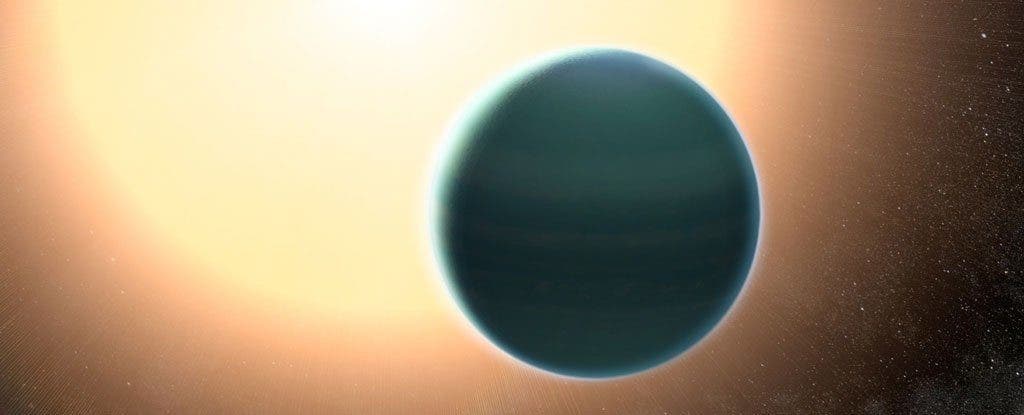It’s a type of planet which we didn’t even know existed — a Neptune-sized planet closer to a star than its namesake.
A pioneering new study has revealed what astronomers believed to be evidence of water vapor and exotic clouds around a planet located some 437 light-years away from Earth. The planet, called HAT-P-26b, is a so-called warm Neptune — a Neptune-sized gas giant orbiting very close to its sun, which makes it much hotter. The new study also showed that the planet has an atmosphere composed almost entirely of hydrogen and helium, something which was even more unexpected.
“This exciting new discovery shows that there is a lot more diversity in the atmospheres of these exoplanets than we have previously thought,” David Sing, an astrophysics professor at the University of Exeter in England, said in a statement.
The chemical composition indicates a primitive atmosphere. Researchers believe that, compared to the gas giants in our own solar neighborhood, this planet either developed later in the history of its solar system, closer to its star — or both. It’s a quirk, but it’s a quirk which can be very useful. It kind of breaks the pattern we’ve been seeing in other, similar planets, and this allows astronomers to look at such planets in a new light and better understand the formation and evolution of different solar systems.
“Astronomers have just begun to investigate the atmospheres of these distant Neptune-mass planets, and almost right away, we found an example that goes against the trend in our Solar System,” says one of the researchers, Hannah Wakeford from NASA’s Goddard Space Flight Centre. “This kind of unexpected result is why I really love exploring the atmospheres of alien planets.”
The study itself didn’t employ any new technique. Basically, when the planet passes between its star and the Earth, a fraction of the light emitted by its star is captured and filtered by its atmosphere — but only for some wavelengths. By analyzing the wavelengths of the light which manages to reach us, we can infer the composition of the atmosphere. However, the study was innovative in the sense that it applied the technique to a much smaller planet than previous efforts. This was facilitated by the unusual orbit of the planet — the fact that it’s so close to its star. HAT-P-26b completes a full rotation around in star in just 4.23 days, which makes such observations much easier.
“This ‘warm Neptune’ is a much smaller planet than those we have been able to characterize in depth, so this new discovery about its atmosphere feels like a big breakthrough in our pursuit to learn more about how solar systems are formed, and how it compares to our own,” added Sing, the co-leader of a new study about HAT-P-26b that was published online today (May 11) in the journal Science.
So how would the sky of this alien planet look like? If you were looking through the water clouds, you’d likely see a washed-out, gray sky. While there is some water vapor, the clouds are much more exotic, likely made of disodium sulfide. These clouds would cause scattering in all colors, which is why you’d likely end up with a grayscale sky.
In recent years, telescope and telescope arrays such as NASA’s Kepler have revealed several intriguing planets, greatly expanding our understanding of alien worlds and their solar systems. The variety we are seeing is staggering and sometimes unexpected, but studies like this go a long way towards helping astronomers understand this variety.
Journal Reference: H.R. Wakeford el al., “HAT-P-26b: A Neptune-mass exoplanet with a well-constrained heavy element abundance,” Science (2017).










